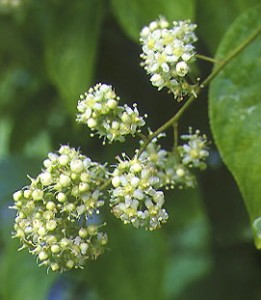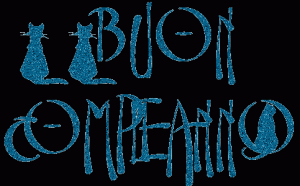When Stefano got home from work last night, I told him about the FDA’s “avoid non toxic” warning, and he commented “that implies that everything that the FDA approves is toxic!” Eh!
Well, today I thought I would provide a sort of segue to yesterday’s tirade by discussing the Vioxx story and other related matters. Let me start off with an overview of evidence-based medicine…
1. The May 11 2008 Moss Report (see: http://tinyurl.com/3q8x2y) has an essay on the issue of so-called “evidence-based medicine.” This expression, Moss tells us, implies that medicine comes in two varieties – the kind that is based on a solid foundation of objective evidence, and the kind that is not. Because of the apparently stark good-versus-bad division it suggests, the phrase lends itself well to being used as a pejorative by those who are outspokenly opposed to complementary and alternative medicine (CAM). To such people, anything other than standard conventional medicine is by definition unproven, speculative, founded on dubious premises and inherently inferior.
Okay, so “evidence-based medicine” is generally equated only with conventional treatments. But, and I found this very interesting!, Moss informs us that this was not at all the intended meaning of the term as it was originally conceived. The Evidence-Based Medicine Working Group (EBMWG), a research collaborative of clinicians and epidemiologists from Ontario’s McMaster University, who first coined the phrase in 1992, were not attempting to draw a contrast between orthodox and unconventional medicine; far from it. They were in fact trying to change the medical profession’s entrenched tendency to cling, mainly out of habit, to procedures and treatments for which there was little if any solid evidence of effectiveness (EBMWG 1992). Aha!
In this utopian context, the medical experience of an individual (that of yours truly and of many blog readers and list members/friends) would not be dismissed as unproven or anecdotal…how many times have I been told that I am merely an interesting anecdote? Too many times to be counted…makes me smile, actually. On the contrary, in such a context, our results would be studied and compared to the best available external clinical evidence from systematic research. Ah, were that the case…!
The “British Medical Journal,” Moss continues, had experts review 2500 commonly used treatments: of these, only 13 % were found to be definitely beneficial, 23 % likely to be beneficial, 8 % equally beneficial and harmful (!), but 46 % were rated as being of unknown effectiveness.
Almost half these treatments were of UNKNOWN EFFECTIVENESS? A mere 13% were BENEFICIAL? And this is “evidence-based medicine”!!! ![]() Since at first I wondered if the above-mentioned “treatments” referred to conventional CANCER treatments, I went to the “BMJ Clinical Evidence” website where I found out that no, the term refers to conventional treatments in general; ones, that is, tested in clinical trials for a variety of ailments, not just cancer.
Since at first I wondered if the above-mentioned “treatments” referred to conventional CANCER treatments, I went to the “BMJ Clinical Evidence” website where I found out that no, the term refers to conventional treatments in general; ones, that is, tested in clinical trials for a variety of ailments, not just cancer.
The final part of the Moss essay is also interesting, so if you have a snippet of time please go check it out. It has to do with plugging individual cancer patients into so-called standard protocols that are designed mainly to make things easier for our doctors. But what about us, what about the cancer patients?
Just a quick comment. I remember my first haematologist (a very nice, gentle man who meant well) telling me that my chemotherapy regime would be “personalized”…I believed him then. But really, what he was suggesting was a standard myeloma drug, Velcade. There is nothing personal about Velcade, whose only variable could be dosage. Back then, though, I believed him (I have not had any chemotherapy thus far, by the way).
So let’s define these protocols by what they really are: standard treatments. Period.
2. Let’s go to item number two—the Vioxx story that I mentioned yesterday. The April 16 2008 edition of the British “Guardian” has an article about Merck, the well-known multinational drug company, that had hidden death rates caused by Vioxx, also known as rofecoxib, a painkiller of its manufacture. For many years. Merck provided the FDA only with selected data on deaths in its clinical trials, and failed to include people who had a fatal heart attack soon after coming off the drug. Oh, but the story gets “better”…
[…] papers published in journals on the results of Vioxx trials were ghostwritten by employees or contracted medical writers, and […] leading doctors were later invited to be named as authors. Financial links were sometimes but not always declared. So, basically you (=drug company) hire a medical writer to write a favourable clinical trial report extolling your newest bestest drug and then ask a couple of doctors to put their names on the report. Nice, huh?
The revelations about Merck’s scandalous, indeed criminal!, conduct were published in the “Journal of the American Medical Association” in April (see: http://tinyurl.com/4z6jch and http://tinyurl.com/4pga4h). Vioxx, by the way, was pulled from the market in September of 2004, the biggest market pull in history!, after reports of deaths, heart attacks and/or strokes. Merck officials knew of the risks, apparently as early as 1997, but did nothing until a clinical trial in 2004 showed an increased risk of heart attacks and strokes. Merck knew. Did nothing…
This drug, like (I am sure!) many others, had no business being put on the market in the first place. Ah, but you see, it was a bestseller during the five years or so that it was on the market. Must have made Merck a bit more than a pretty penny, don’t you think? Speaking of pennies. Last November Merck settled with $ 4.85 billion the thousands of Vioxx lawsuits that involved 47,000 people. Take a look at the New York Times article on the settlement: http://tinyurl.com/4ajxrc. Appalling.
And, by the way, the practice of hiring folks to write up fake clinical trial results (etc.)—ghostwriting—is apparently widespread, as we can read in this April 16 2008 New York Times article: http://tinyurl.com/5ydl2u.
Evidence-based medicine. I’d say this is evidence that some or most or all drug companies are about as trustworthy as little kids caught with their hands inside the cookie jar…
P.S. According to a long 2006 report (see link below), Merck’s top management lost no sleep whatsoever over the Vioxx disaster, and in fact would be happy to see Vioxx put back on the market (!). Oh, and the FDA apparently knew about the problems caused by this drug as early as 1999 (the proof is in a 1999 memo). Shameful. See: http://tinyurl.com/4lsv5j
Medicine is no longer about health, it’s about market share and profits.


